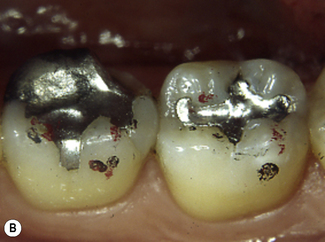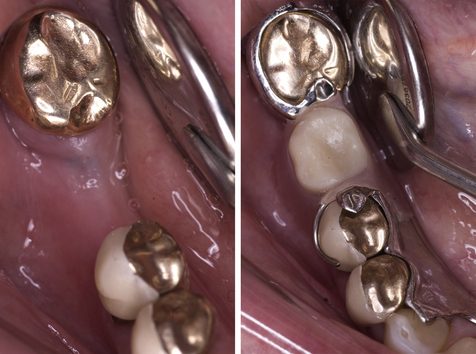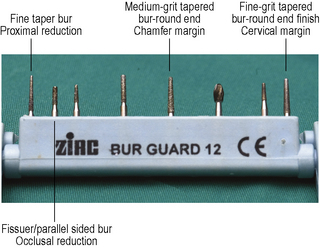Chapter 8 Gold crowns
Introduction
It is traditional to consider full gold crowns, three-quarter crowns or variations of such, and overlays separately. However, there is commonality between the provisions of such restorations. Such shared characteristics will be stated, but when there are differences, these will be identified. This chapter will exclude gold inlays and onlays which are discussed in Chapter 12.
General considerations
Indications for full coverage gold crowns
These are listed in order, the first being the most common:
Contraindications to full coverage castings
Contraindications to providing such restorations include a lifestyle which adversely influences oral health; these are relative and can usually be overcome should the patient so wish. This must be supported by evidence of change such as quitting smoking, modifying the use of erosive drinks, dietary changes to reduce the frequency of sugar consumption or improved home care. Other ‘dental’ contraindications such as ‘active’ caries, ‘active’ periodontal and periradicular disease have been discussed in Chapters 1–3.
Steps in tooth preparation for a gold crown
General considerations
Occlusal design
Burs and instruments
In this subsection, only selected areas will be discussed. In the UK it is conventional to prepare teeth for crowns and bridges using medium-grit diamond burs (Figure 8.3). This is in contrast to other countries where tungsten carbide burs are more commonly used. There is no clinical evidence to show that preparations cut with one or another type of bur result in restorations with a superior outcome.
/>
Stay updated, free dental videos. Join our Telegram channel

VIDEdental - Online dental courses






